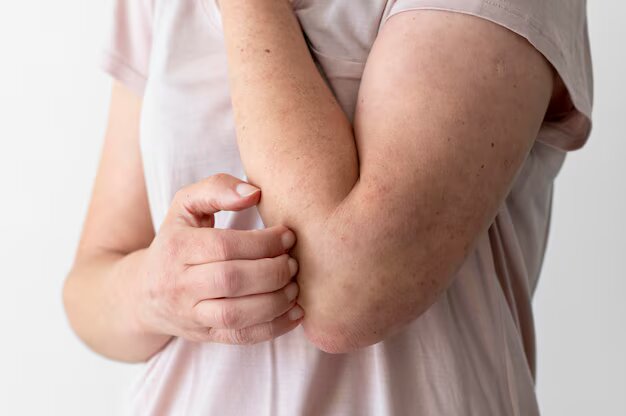Where Can You Find the Best Ways to Cut Body Fat?

If your body fat levels are too high, embarking on a program to lose weight and reduce body fat can have many health benefits. However, avoiding fad diets and focusing on healthy habits can promote long lasting fat loss.
Swapping out sugary drinks for healthier selections can help you burn more calories. A higher intake of healthy fats, such as those found in olive oil and nuts, is also associated with a reduced risk of weight gain.
Strength Training
When it comes to best ways to cut body fat, strength training is just as important as cardio. According to the American Council on Exercise, “the more muscle mass you have, the higher your resting metabolic rate and the more calories you burn at a lower level of activity.”
In other words, incorporating strength training into your workouts can help you get leaner by reducing body fat while maintaining your muscle mass. Strength training, also known as resistance training or weightlifting, involves using free weights, weight machines and even your own bodyweight to build strength and endurance. During your routine, make sure to warm up first with dynamic exercises like inchworms, dead bugs and hip bridges, advises Women’s Health Mag. Doing so helps lubricate your joints and raises your heart rate to increase the overall burn of your workout. And don’t train to the point of exhaustion, as research suggests that stopping just short of complete fatigue is more effective for building muscle.
Unlike some types of cardio, weight training is an excellent tool for building a lean, athletic physique, says trainer Melissa Boyd. And despite the common myth that lifting weights will cause you to bulk up, building lean muscle actually helps boost your metabolism, she notes. Plus, “being stronger and more resilient to everyday tasks—carrying your groceries or putting away that big box of clothes on high shelves—just makes everything easier.”
High-Intensity Interval Training (HIIT)
You might think that HIIT is only for the young and spry, but it can be a great addition to any exercise regimen — even if you’re older. HIIT workouts are quick, effective and don’t require expensive equipment. All you need is a timer, your body and some space to sweat.
HIIT involves short bursts of high-intensity exercise followed by a recovery or low-intensity period, and these cycles are repeated throughout the workout. The intense work phase can last anywhere from a few seconds to several minutes and uses 80 to 95 percent of your maximum heart rate. The recovery or low-intensity phases use significantly less effort.
The HIIT approach burns more calories during the workout and also increases metabolism for 24 hours afterward. This post-exercise calorie burn is called excess post-exercise oxygen consumption, or EPOC. EPOC can help you burn more calories when you’re not exercising, too.
Many HIIT workouts include a variety of exercises that target different muscle groups. This helps to build muscles and boosts endurance. For example, a workout might have you doing four to five rounds of body weight exercises like squat jumps or burpees.
One study found that 12 weeks of HIIT was non-inferior to moderate-intensity continuous training (MICT) in terms of inducing weight loss. However, the frequency of HIIT training should be gradually increased over time to avoid overtraining or injury. For this reason, you should pay attention to your body’s recovery time and listen to cues like muscle soreness, energy levels and sleep quality to determine how often you can perform a HIIT workout.
Intermittent Fasting
A lot of diet and exercise trends get blown out of proportion by the time they hit mainstream media, which often leads to benefits being exaggerated while risks are downplayed. But intermittent fasting (IF) has been gaining popularity as more reports suggest it may be more than just another fad.
Research suggests that IF can help you burn fat by making it easier for your body to switch from using its readily available glycogen stores to burning up your own body fat for fuel. The key is the timing and amount of food you eat. When you eat during your feeding window, it’s important to consume balanced meals including lean protein, healthy fats and fibre.
The other key to getting the most out of IF is choosing an eating schedule that suits you. Some IF strategies include the 5:2 method (limiting calories to 500 per day for two days of the week) and eating one meal a day (OMAD).
While there’s still much to learn about intermittent fasting, it appears that as long as you don’t go too low in calories, it can be a good option for fat loss — especially if you incorporate strength training and healthy fats into your routine. But keep in mind that if you’re not able to maintain this type of eating pattern long-term, it won’t do much for you in terms of fat loss.
Healthy Fats
Fat has a bad rap, but the right type of fat can actually help you lose weight and maintain your body. Fat is an essential part of a balanced diet, providing energy and supporting cell function and hormone production. It also helps the body absorb fat-soluble vitamins, such as A, D and E.
Dietary fats come in many forms, but some are unhealthy, like saturated and trans fats, which can raise cholesterol levels and increase your risk of heart disease and type 2 diabetes. Healthy fats, on the other hand, can lower cholesterol and improve your overall health.
You’ll find healthy fats in foods such as olive oil, avocados and nuts. Try spreading a spread such as hummus or almond butter on whole grain toast for breakfast, or adding avocado to a green salad for lunch. Add a handful of nuts as an afternoon snack, or use olive oil to make a dressing for a leafy salad.
Conclusion
The key is moderation, as healthy fats are still high in calories. For best results, aim to get 20 to 30 percent of your calories from healthy fats. This will help prevent or manage your risk of certain chronic diseases, including heart disease and type 2 diabetes. The best source of healthy fats is found in unprocessed, plant-based foods. The nutrition label on food products can help you identify the types of fats they contain.











